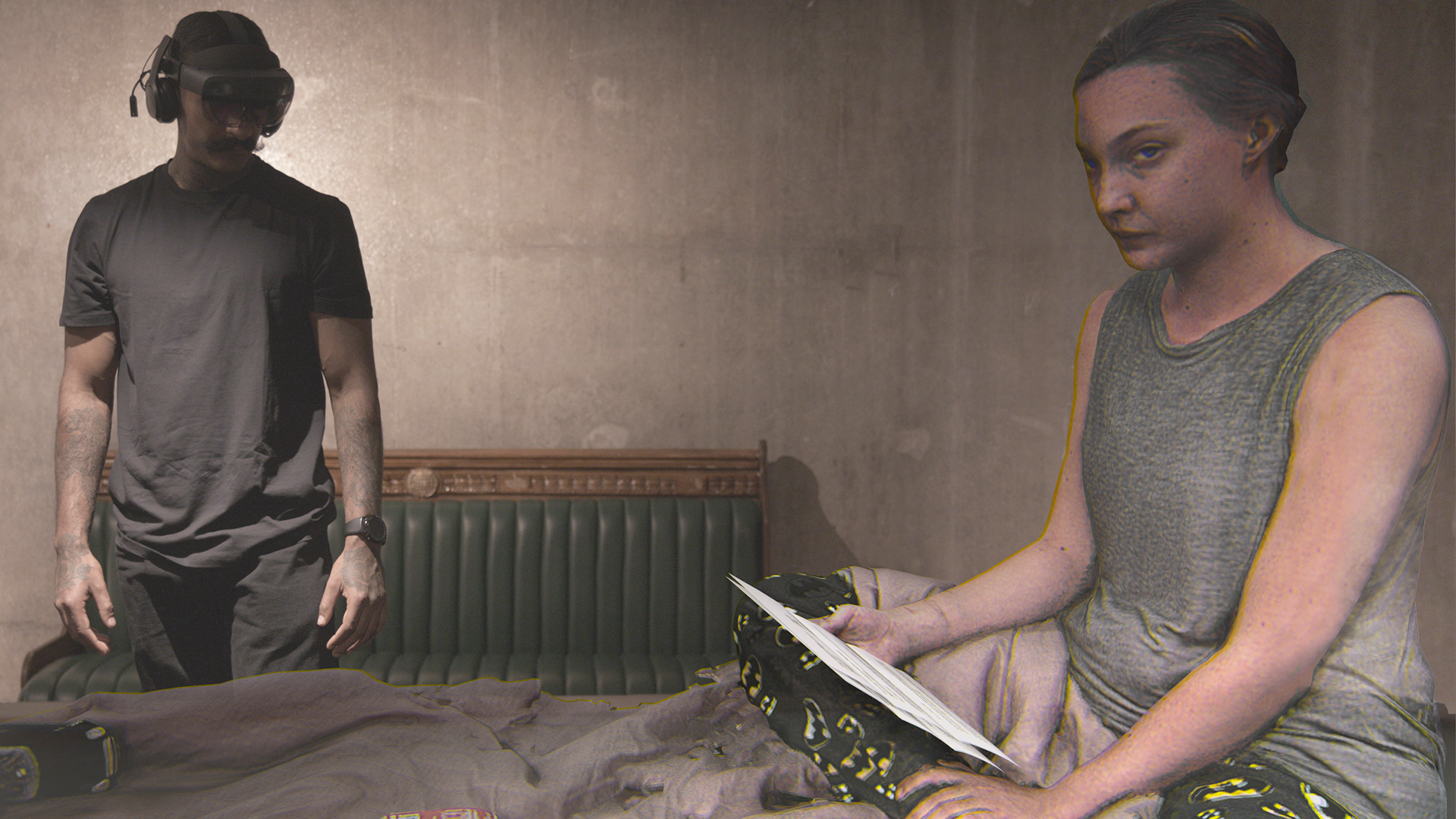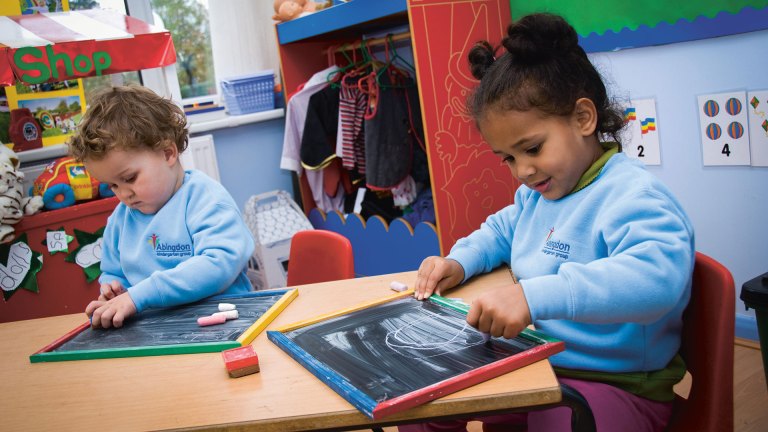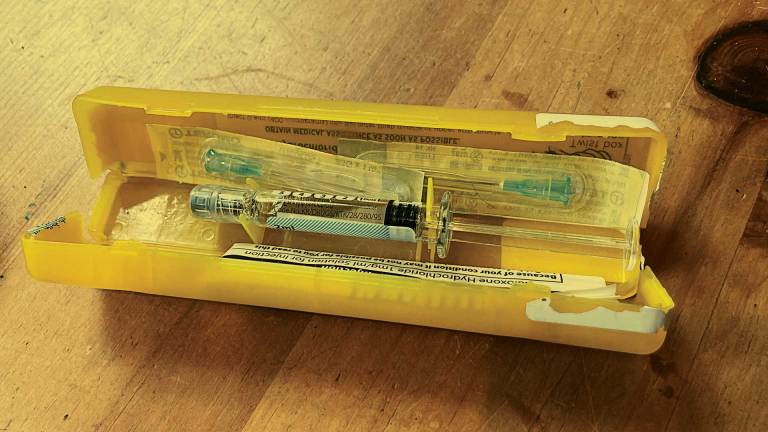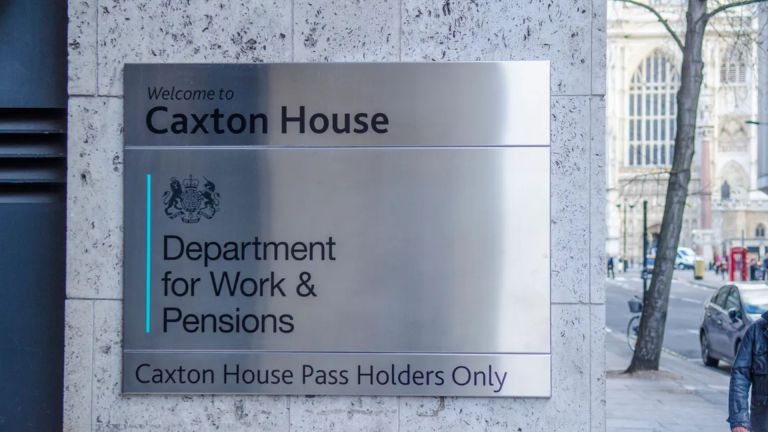“A lot of organisations and groups, like Disabled People Against Cuts, formed then. Disability News Service started to investigate what the government knew about those links from about 2014.” They also compiled a timeline of these links, displayed in the exhibition foyer.
“I came across the first story in 2016 and it just hit me really hard,” says director Sacha Wares.
“I’m a parent of a child with really complex needs, and when I first read about the number of disabled people who were dying because of benefit cuts, I thought, ‘That’s a possible future for my child.’
“Most parents look at their child and think, ‘Are they going to be a ballet dancer?’ I thought, ‘Are they going to be dead at the hands of the government?’
“I thought, as an artist, I can either ignore it, or I can think about how I can use my connections in the theatre industry and my storytelling capacity to bring attention to those stories.”
The first interviewee she spoke with for the Museum of Austerity was Nicole, the daughter of Moira Drury, who died in 2015 aged 61.
Advertising helps fund Big Issue’s mission to end poverty
Moira is depicted in a hospital bed in a cubby set apart from the main exhibition. There is a seat at the end of her bed on which visitors can sit as Nicole explains the abuse that her mother endured at the hands of her father, leaving her traumatised.
Moria was later diagnosed with cancer and granted employment and support allowance. But after she was forced to miss a work capability assessment due to a debilitating bout of flu, the Department for Work and Pensions declared her fit for work and ended her payments. Nichole believes that the stress that this decision caused her mother hastened her death.
Wares harnessed the possibilities offered by extended reality technologies to tell such stories. “Because everybody was dead, the ‘real life’-ness of theatre felt at odds with the stories, because you’re having to really deal with absence,” she says. “The people are gone, so how do you tell the story of someone who’s gone?”
The National Theatre’s Immersive Storytelling Studio provided technology “that allows you to deal with invisibility and transparency”.
“The evidence that shows the links between austerity and welfare reform and people’s deaths is quite often hidden in plain sight,” Mills says. “It’s available, but you have to know the documents are there to find them – on the Ministry of Justice website, in Prevention of Future Deaths reports or in Freedom of Information responses.”
Museum of Austerity responds to that invisibility at the level of both form and content – to surprising effect.
Advertising helps fund Big Issue’s mission to end poverty
“Audience members did things I wouldn’t expect. They sat on the floor and listened to the whole story,” Ware says. “And actually, people did some really surprising things, like they held hands with the subjects. It just shows you that human beings do have it in them to feel.”
This is perhaps, she says, due to the use of mixed reality. “At this moment in time, it’s so new to people that it gets through the guards we’ve got. We’ve got guards against film; we’ve got guards against newspapers; we’ve actually got guards against people on the street; but right now, we actually haven’t got a guard about mixed reality, because we haven’t seen it yet.”
The installation was produced in collaboration with the loved ones of those whose stories it tells and emphasises the humanity of those it features.
“We don’t depict the absolute worst moments,” Ware says. “All the moments we depict are moments where I feel an intervention could still have happened.”
The Museum of Austerity will be touring the UK in spring 2024. Find out more here.










